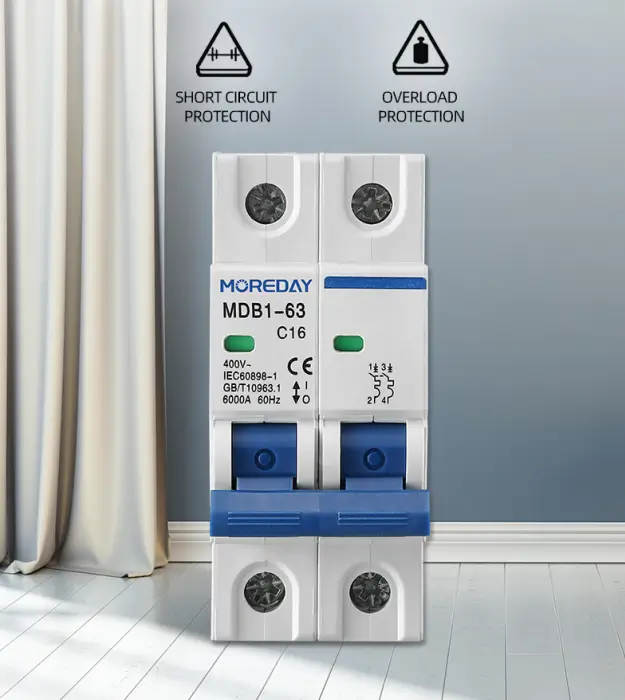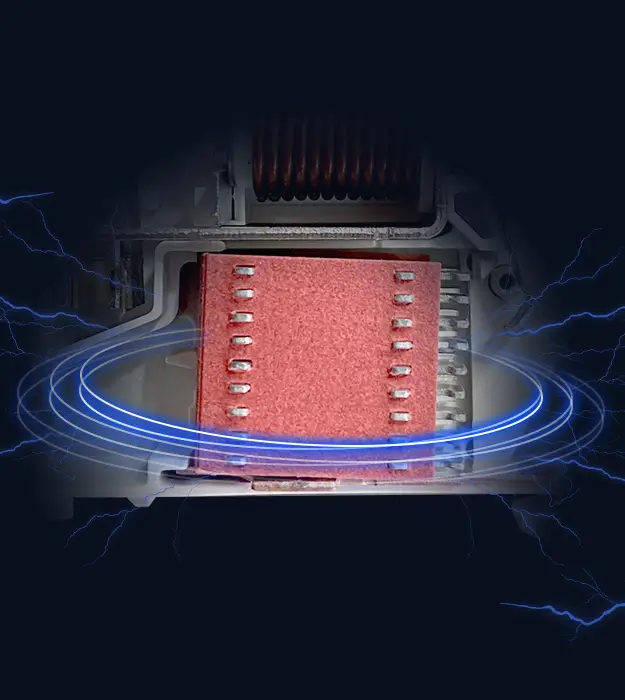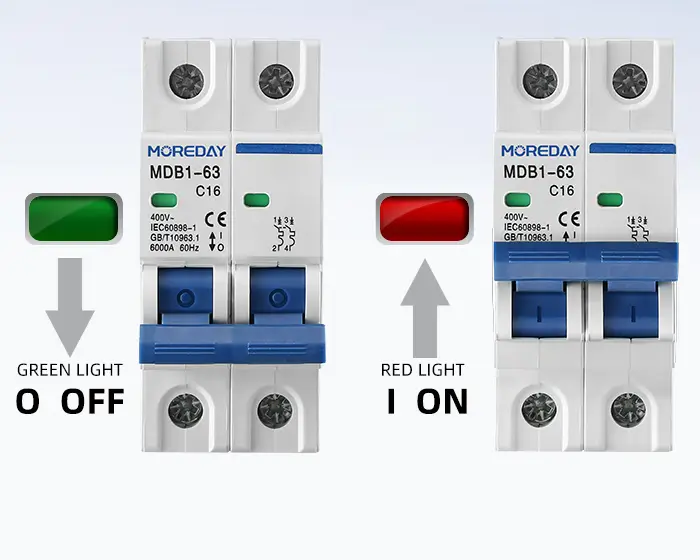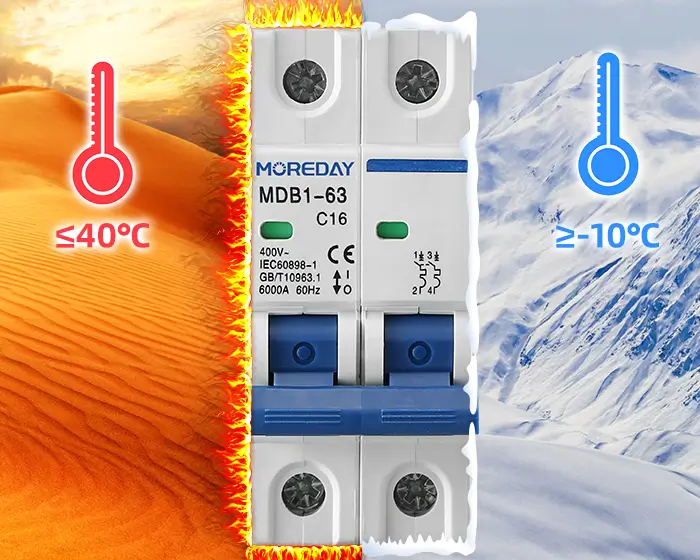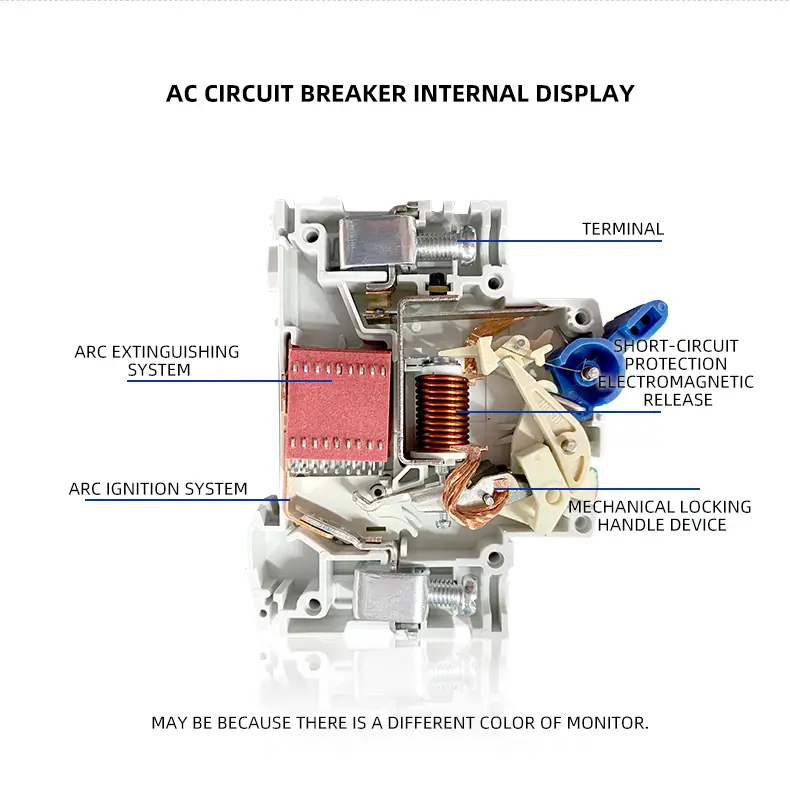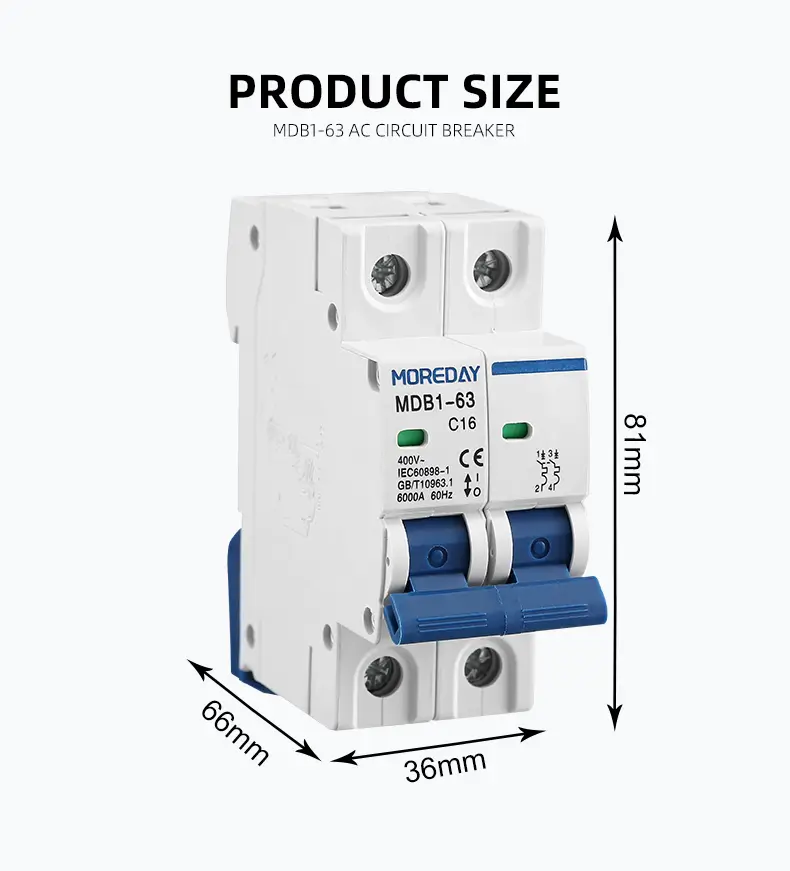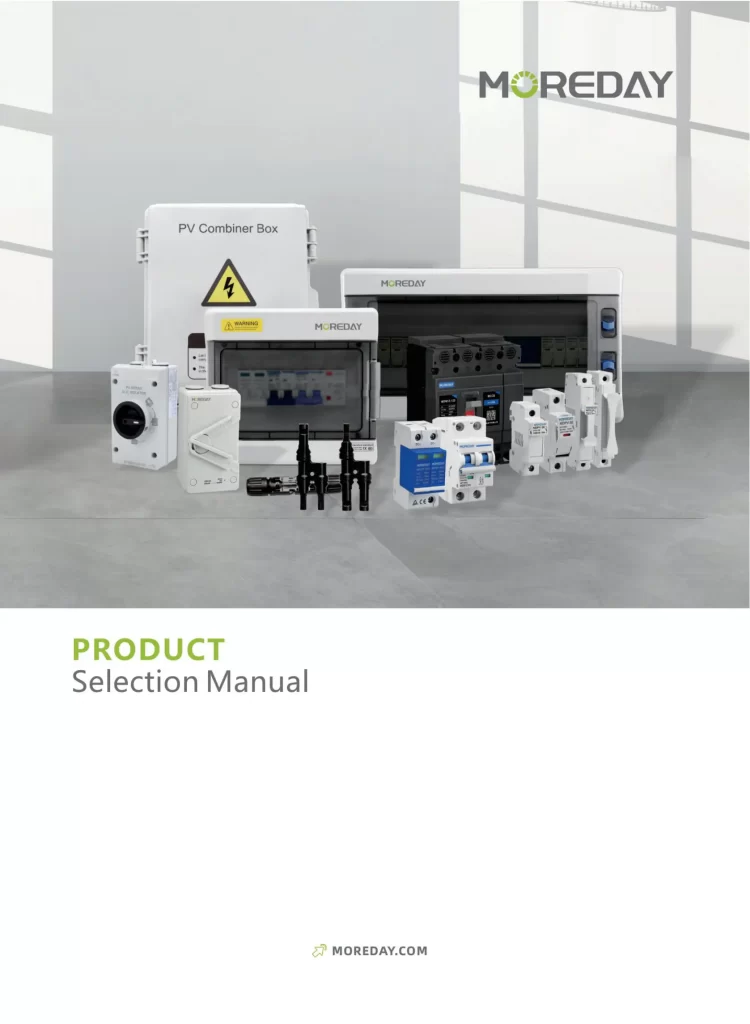Previous
Next
AC MINIATURE CIRCUIT BREAKER MDB1-63 6KA 63A IEC
Suitable for industrial, commercial, high-rise, and civil residence circuit protection.
Features:
- Up to 63A current rating
- Current limiting design
- Three levels of short-circuit protection,B、C、D curves.
- Housing: pluggable design
- Contact position indicator(red/green)
- Easy installation on din rail



